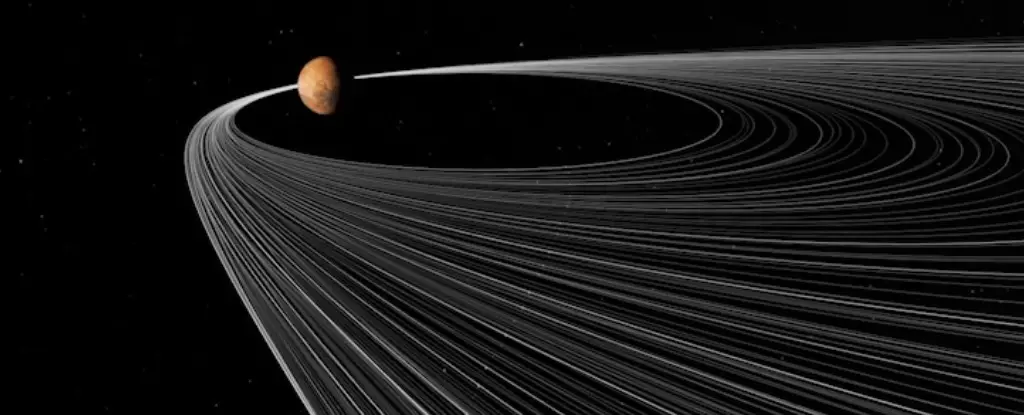Within the vast expanse of our Solar System, Earth and Mars stand out as the only two rocky planets harboring moons. The origins of Earth’s Moon are relatively well understood, traced back to a colossal collision with a Mars-sized protoplanet named Theia. The story becomes murkier when we shift our focus to Mars’ two moons, Deimos and Phobos. Despite extensive research and various hypotheses, a definitive explanation for their formation has yet to surface. The absence of rock samples from these Martian moons compels scientists to rely on theoretical models and computer simulations, driving home the complexity of untangling their origins.
One of the predominant theories posits that Deimos and Phobos could be captured asteroids. Proponents of this idea point out their physical resemblance to small asteroids and argue that they were drawn into Mars’ gravitational field during the planet’s formative years. However, Mars presents an intriguing paradox. While larger planets like Earth and Venus lack captured moons, Mars, with its relatively weak gravitational pull, supposedly captured not one, but two. This contradiction raises questions about the feasibility of such an event. Moreover, if they were indeed captured, we would expect their orbits to be more elliptical, contrary to the surprisingly circular orbits of Deimos and Phobos observed today.
In light of the difficulties associated with the asteroid capture hypothesis, an alternative model has emerged suggesting that these moons could have formed from an ancient impact. This scenario posits that a sizable asteroid or comet, with approximately three percent of Mars’ mass, struck the planet and caused a debris field to form. Such a collision would produce a ring of fragments that could eventually coalesce into the moons we see today. While this idea neatly explains the circular orbits, it raises further complications. Much like the capture theory, it also implies that the resultant debris would be positioned closer to Mars, leading to questions about the separate and distinct orbits of Phobos and Deimos—the former residing within a much closer orbit than the latter.
Advancements in computer simulations have given rise to a more nuanced explanation, proposing what may be a harmonious blend of both previous theories: a near miss by a large asteroid. If an asteroid skirted closely enough to Mars, the planet’s tidal forces could theoretically fracture the asteroid, liberating numerous fragments. Over time, these remnants would enter into elliptical orbits, influenced by Mars’ gravity and the gravitational nudging of the Sun and other celestial bodies. Eventually, as these dynamics played out, some fragments might collide, forming a debris ring that is distinct yet comparable to an impact scenario.
This emerging model represents a significant leap forward in our understanding of Mars’ moons. Not only does it provide a plausible account for their origins, but it also accommodates the specific orbital characteristics of both moons. Phobos, with its close proximity to Mars, and Deimos, positioned further away, can both be explained within this framework.
Yet, despite the intriguing theories and simulations, the only definitive way to resolve the enigma surrounding Deimos and Phobos is through direct exploration. The upcoming Mars Moons eXploration (MMX) mission, set to launch in 2026, serves as a beacon of hope. By analyzing samples from Phobos and conducting detailed examinations of both moons, scientists aim to shed light on their mysterious origins.
As we stand on the brink of what promises to be a major leap in our understanding of Martian history, the dialogue surrounding Deimos and Phobos reminds us that the mysteries of our Solar System are far from solved. Whether through near misses, collisions, or perhaps other yet-to-be-discovered factors, the unique narrative of Mars’ moons continues to captivate and challenge scientists, ensuring their place at the forefront of astronomical research for years to come.


Leave a Reply